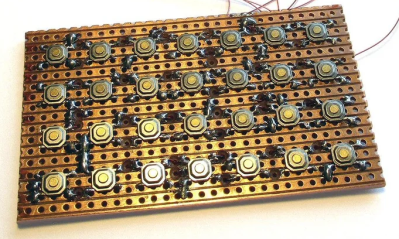What do you do with a circa 1985 Casio FX-451 calculator with a bad keyboard? Well, if you are [Poking Technology], you transplant the inside of the calculator to a new custom keyboard. There are two videos that cover the process in detail, which you can watch below.
The calculator has a unique design. It looks like a simple calculator in a wallet. But the wallet opens to reveal an extended keyboard with all the scientific features onboard. Unsurprisingly, the membrane keys didn’t survive over four decades. Disassembling the unit was a challenge. Soldering wires to the keyboard lines was further complicated by the fact that some of the lines are on the back of the PCB and pass through to the top under the main IC.
The new keyboard is quite a bit larger than the original, making this more of a desk calculator, but that also means you can use high-quality keys. We’d love to see a 3D printed case to wrap it all up, but the bare PCB look has its charms, too.
If you can’t understand how [Poking] can love a calculator so much, you probably never owned an HP-41C, either. Of course, our retro calculator dreams also include Star Trek.


















